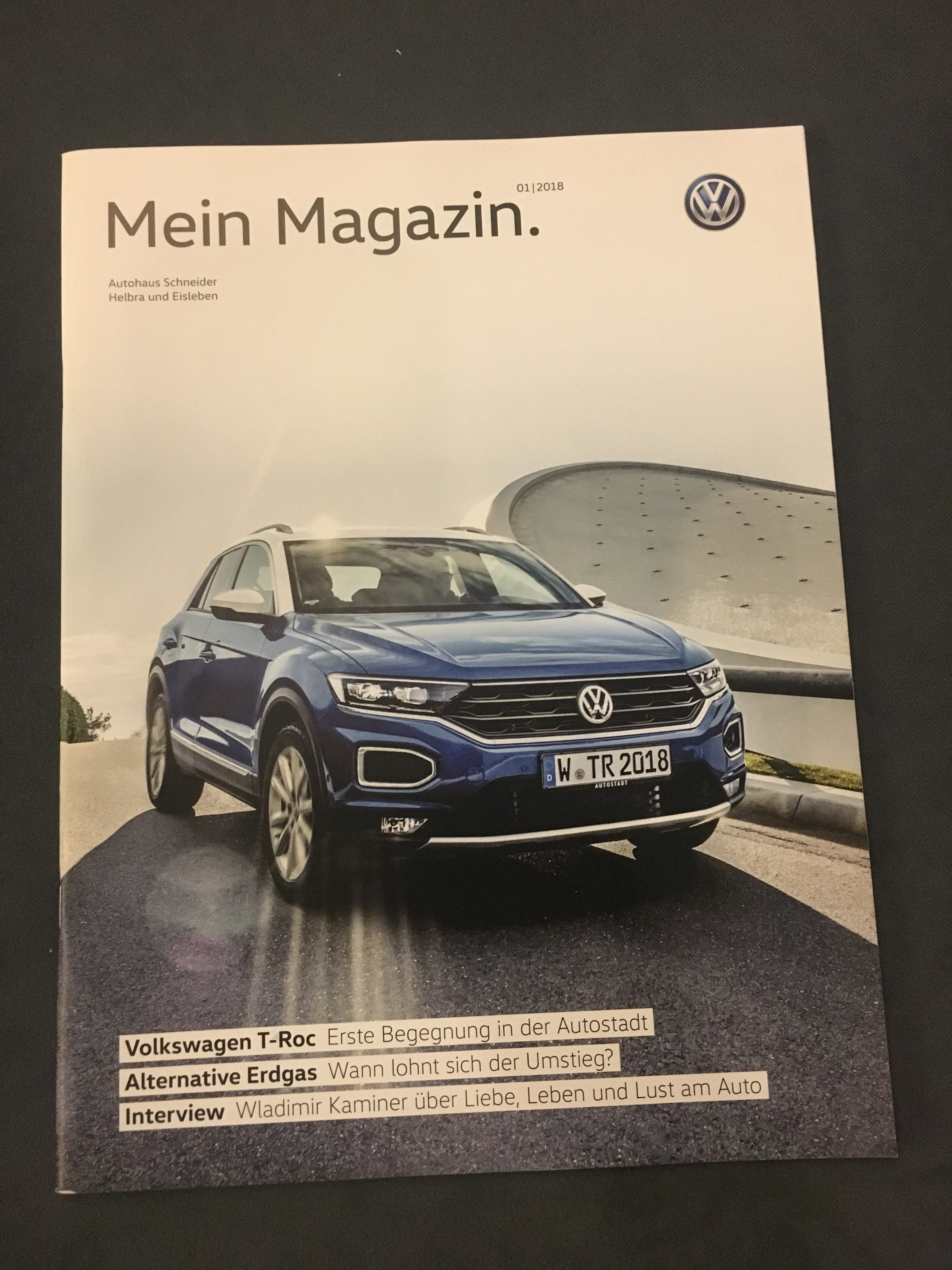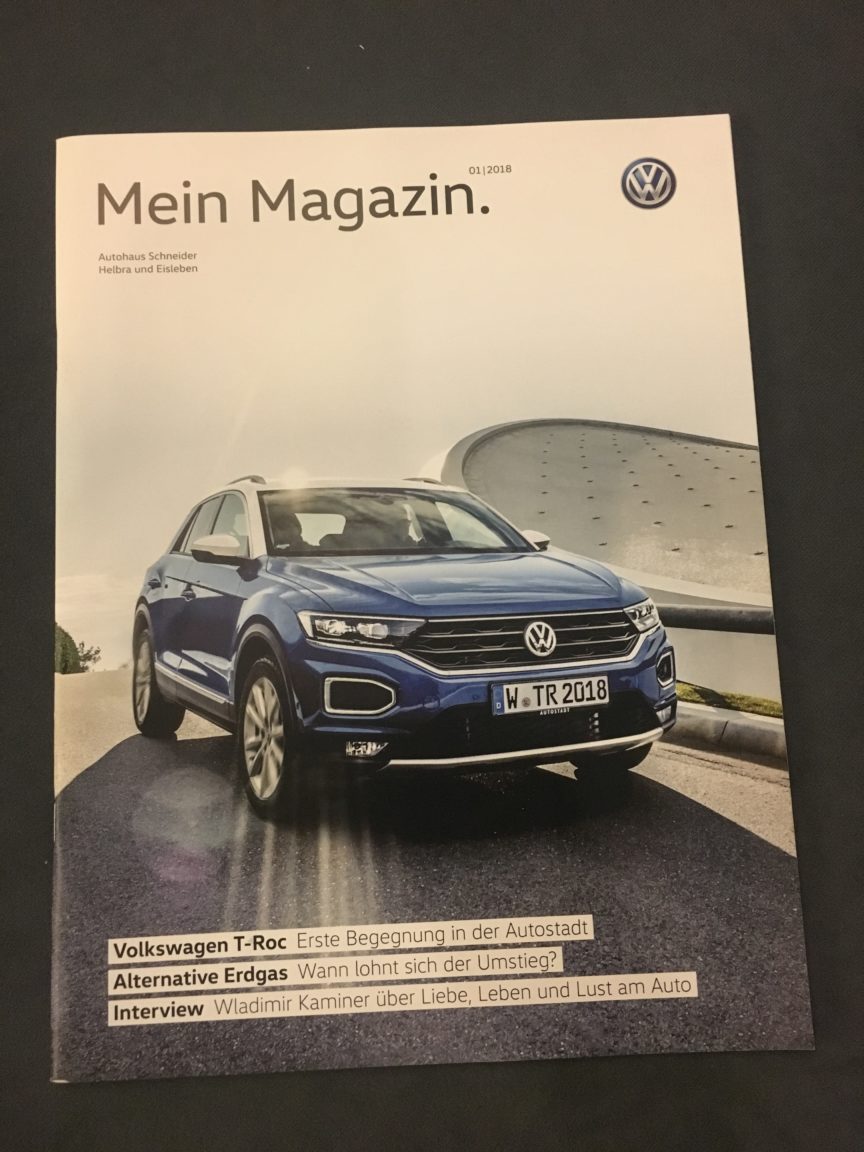Christian Haneke of Service & Print Group Haberbeck gave a presentation today at the Ricoh Interact 2018 event on offset and inkjet working together. In terms of credentials, Mr. Haneke was responsible for building Haberbeck’s digital division from scratch starting back in 2012. That included both roll and sheet-fed print equipment plus related finishing and software. Most recently, that included the implementation of high-speed inkjet.
Like many companies exploring inkjet, Haberbeck looked at the volumes of current work that could be transferred to a production inkjet platform, but he had a broader message:
- Transferring volumes is not enough, you should also strive improve the work in some way.
- Look at existing work that can be “transformed” into a combined product leveraging offset and inkjet for their respective strengths.
- Seek out the new markets that combined applications will allow you to pursue.

Example: Volkswagon Magazine with inkjet covers and offset produced body using the same paper for both processes. Cover is personalized with an image of the car the reader owns.
Haberbeck chose the Ricoh VC6000 which allows them to print on offset stocks, including offset coated. They did note that finding offset stocks that work well is still challenging. We have said on numerous occasions that when OEMS say that they can print on offset stock, that does not mean every offset stock. Continuing in that vein, Heneke noted that the universe of papers that will print on digital is smaller than offset, and inkjet has fewer options than toner. For that reason, he advises that companies ensure that their procurement organizations take a “digital first” approach to paper buying when trying to find stocks that will run on both inkjet and offset. This is somewhat counter to how clients typically expect to approach paper decisions and is also a change management issue for procurement departments. It is also much more efficient.
Another area of education was educating clients and agencies about what their inkjet press could do. He noted that several of their agency customers were ready to say no as soon as they said the word inkjet. Haberbeck made a number of smart moves to counteract that. First, they enlisted the aid of Ricoh in pursuing PSD certification with FOGRA to demonstrate the quality and consistency of the output delivered on inkjet. They were the first company to receive a “quality level A” rating and they are understandably proud of that achievement. So, they are now in a position to make measurable claims about quality to their clients, and they back that up with samples on their various papers to help customers to see the inkjet and offset results side by side.
With a full service media and production organization, Haberbeck has a large client base heavily weighted towards retail and automotive brands. These are market segments with high quality and coverage demands. By taking an approach that is not based on offset or inkjet but rather offset and inkjet, Haberbeck has gotten very innovative with their ability to personalize, version and manage Print-on-Demand opportunities.

